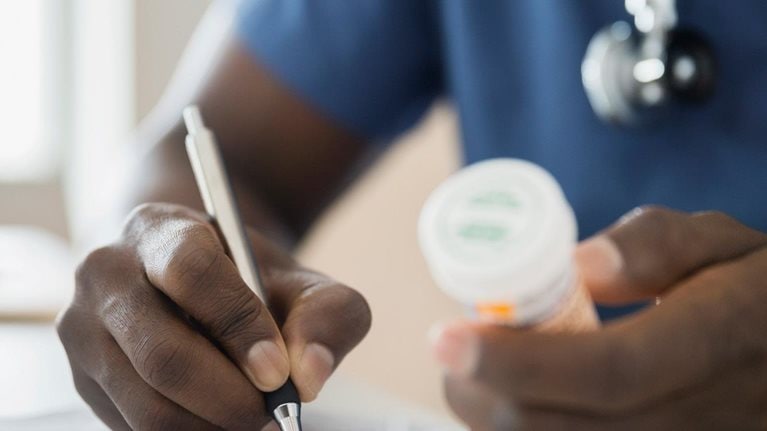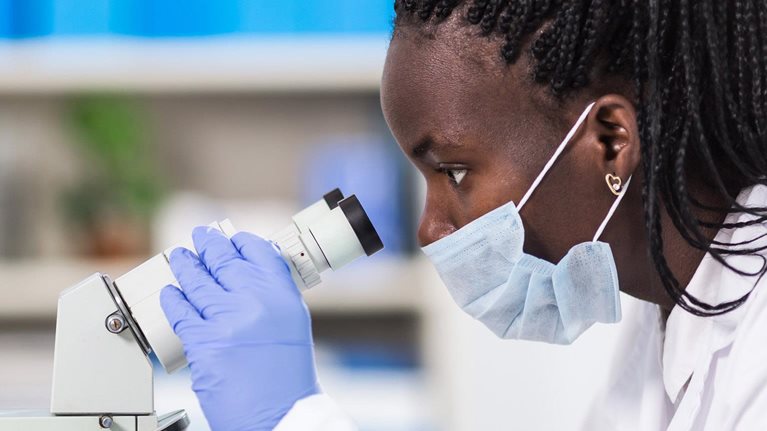Biosimilars have steadily gained traction over the past few years. Projections suggest that global sales could more than double to $15 billion by the early 2020s, with an estimated $5 billion to $8 billion coming from emerging markets (Exhibit 1).
The commercialization of biosimilars began in Europe, where broad reimbursement coverage, high treatment rates, and dedicated regulatory pathways created a thriving market. By 2018, the European Union had approved more than 40 biosimilars, and many went on to be commercialized successfully in Australia, Canada, Japan, and South Korea. In the United States, more than 15 biosimilars have been approved to date. Meanwhile, emerging markets have been a cradle for biologic alternatives in the broader sense, which includes copies of biologics that have not been subject to a dedicated biosimilar comparability pathway. More than 70 such products are marketed in India, and more than 40 are marketed in China. As regulatory frameworks mature, the quality of these products is rapidly improving, making them more portable to other markets.

Against this backdrop, multinational companies that seek growth are setting their sights on opportunities in emerging markets, where biologic-treatment rates are still low. In China, for example, 20 to 25 percent of newly diagnosed breast-cancer patients are treated with biologics, compared with more than 70 percent in the United States. Other therapeutic areas show similarly wide gaps. Fewer than 10 percent of colorectal-cancer patients are treated with biologics in China, compared with 55 percent in the United States, for instance, while the corresponding shares for rheumatoid arthritis are fewer than 5 percent and 25 percent, respectively. Similarly, in Brazil and Mexico, up to 40 percent of patients with tumor types eligible for treatment with biologics do not receive therapy. These markets represent a crucial opportunity to help address affordability and broaden access to quality treatment for patients.
Emerging markets differ in regulatory pathways, payer perceptions, pricing, affordability, and competitive landscapes—factors that biosimilar companies should take into account when deciding which markets to enter (Exhibit 2). A good first step is to assess a country’s regulatory framework carefully to ensure that it sets a high standard for biosimilarity and has a clear approval pathway.

Having decided to enter, smart companies then employ innovative pricing strategies to unlock access to patients, adapt business models to compete on factors other than price, and consider whether and how to collaborate with local champions.
Carefully assess regulatory frameworks
To gain access and develop a sustainable share, companies need to prioritize markets with a maturing regulatory environment and policy incentives that create a supportive environment for biosimilars. Most emerging markets that have such a regulatory framework have modeled it on those of the World Health Organization (WHO) or the European Medicines Agency (EMA).
Brazil and China have created solid frameworks, including accelerated approval pathways and strict requirements for evidence of biosimilarity. In Brazil, more than 10 biosimilars have been approved since its biosimilar pathway was established, in 2010. Although China did not experience an immediate uptake of approvals for biosimilars under its new pathway, a number of them are expected launch in the next few years, after the recent reforms of the Chinese healthcare market. Other countries—including Egypt, India, Indonesia, Mexico, Russia, Turkey, and Vietnam—have also defined biosimilar comparability pathways, although they have yet to be implemented effectively everywhere.
Some of the biologic alternatives commercialized in emerging markets have been developed without recourse not only to high standards for biosimilarity but also to analytical or clinical investigation. Dealing retrospectively with these products remains a challenge. In India, for instance, more than 70 approvals have been granted in the past 25 years, mostly to local manufacturers, while quality standards were not yet fully harmonized. Such conditions make markets less attractive for entry and partnerships, as the barriers for entry may be too low to support adequate returns for companies investing in dossiers in several countries.
Over the next ten years, as regulatory environments mature, we expect the biosimilar markets in many developing economies to stabilize—particularly in Brazil, China, Egypt, India, Indonesia, Malaysia, Mexico, Russia, Turkey, and Vietnam. These countries collectively represent more than eight million new cancer patients a year.
With this in mind, companies evaluating opportunities in particular countries should pay close attention to their market and regulatory maturity, as well as the individual asset requirements. That involves examining treatment rates, channel options, and the impact of legacy products approved before regulations matured. At the portfolio level, companies choosing to invest in one or another asset should be prepared to make conscious trade-offs between the ease of getting approval and the cost of assuring quality.
Would you like to learn more about our Life Sciences Practice?
Use innovative pricing models to unlock access
In emerging markets that have low reimbursement rates and patients with limited ability to pay for treatment, the primary barrier to access is price. Local biosimilar companies with smaller cost bases scaled across broader portfolios can compete at very low prices. But both they and multinationals need to adopt innovative pricing models to treat large numbers of patients while maintaining profitability.
For such pricing models, biosimilars can take a page from the book of their originator counterparts. Roche’s Herceptin in China provides a notable case of a company that tackled the affordability gap to expand opportunities for patients. The treatment rate for HER2-positive breast cancer was about 20 to 25 percent when the company cut the drug’s price considerably so that it could be included in the national reimbursement list, which is expected to spur a sharp rise in the use of biologic treatments. If the treatment rate were to reach that of the United States—about 70 percent—up to 30,000 additional HER2-positive breast-cancer patients would receive treatment every year.
The classic tactics of discounts and price reductions are not the only ways to address the affordability barrier. Other options include these:
- Patient-assistance programs. In these programs, manufacturers offer medicines at reduced prices to patients who can’t afford the full ones. In Novartis’s cost-sharing program for Gleevec, for example, the patient pays for the initial treatment, and the company contributes to the cost of subsequent cycles, depending on the patient’s ability to pay. This approach supports market penetration, provides therapy comfort, aids the development of guidelines, and helps create a “reservoir market” that may in time be converted to market-price sales, especially in the case of longer therapies for chronic diseases.
- Microinsurance. These are collaborations between biosimilar manufacturers and local insurance companies to provide policies offering patients affordable care. Pfizer, for instance, has recently announced a partnership with People’s Insurance Company of China to offer patients in China pay-for-performance insurance for cancer treatments.
- Microfinance. This is a way to offer payment by installments. In markets with high out-of-pocket payments, experiments with microfinance have extended patient access in areas such as fertility and infectious diseases.
- Dual branding. This is a way for manufacturers to launch the same drug under different brands at different price points to target different affordability segments. Roche adopted this strategy in launching a second brand of Pegasys in Egypt. Pegferon was packaged locally and sold to the government at a lower price, giving 160,000 patients access to quality treatment and enabling sales of Roche’s hepatitis C portfolio to rise to $90 million in Egypt, from less than $10 million, in under five years. Beyond biologics, Sanofi addressed malaria in sub-Saharan Africa by launching a fixed-dose combination treatment through the WHO prequalification program at a lower price than it charges in private markets.
Addressing the affordability gap is critical to success in emerging markets. Companies first assess reimbursement levels and segment the market at a granular level, by disposable income and out-of- pocket spending. Using the mechanisms described above, companies can then design targeted pricing models for each product and country.
Multinationals must heed measures adopted by some emerging markets, where prices are regulated in exchange for investments to improve the local industry. Brazil, for instance, has implemented production-development partnerships (PDPs) that allow multinationals to access its market if they transfer some of their technology and reduce their prices by up to 60 percent, usually with the expectation of further price reductions of 3 to 5 percent a year thereafter. The long-term stabilizing effect of such arrangements could benefit pharma companies, patients, and health systems. Multiparty agreements among multinationals, local pharma companies, and public institutions can be difficult to reach, however, slowing time to market. Multinationals will also need to weigh the benefits and risks of technology transfer carefully before committing themselves.
Adapt the business model to compete beyond price
Companies are also using other levers to increase access in emerging markets.
Differentiating beyond price
Competing in emerging markets means competing in a price-driven environment. Besides adopting innovative pricing strategies to address affordability, biosimilar companies must also seek to differentiate themselves to preserve profitability and encourage switching in markets with lower-priced alternatives. Some companies have capitalized on their investments in developed markets to pursue strategies such as these:
- Implementing detailed plans to control the supply chain to preserve above-par flexibility and reliability. Biosimilar manufacturers, which have repeatedly experienced stockouts in emerging markets, could learn lessons from other market segments (such as vaccines) by, for instance, using contract manufacturing organizations (CMOs) to add short-term capacity quickly in response to unexpected demand.
- Introducing support programs for patients and healthcare professionals. This approach could include training patients to administer their own treatments, providing call centers staffed with nurses, arranging home visits by nurses, or using texts, mobile apps, or social media to send patients reminders to encourage adherence.
- Using real-world evidence from early-launch markets in the European Union and the United States. In markets with limited experience of quality biosimilars, this approach helps companies to build trust in a treatment’s safety and efficacy among payers, patients, and physicians.
- Building a robust body of clinical evidence with interchangeability-trial results and transition data. Using this approach, companies can provide evidence of safety, immunogenicity, and efficacy following a switch from the reference product.
- Offering alternative delivery mechanisms or pain-free formulations administered in a more patient-friendly way than the originator drug or other biosimilars. Subcutaneous injection or inactive formulation ingredients with lower pain scores are two examples.
- Marketing companion diagnostics and high-quality self-injection devices. If these are easy for patients to use, they can unlock access to remote populations.
Targeting subgeographies and channels
Maximizing uptake for biosimilars in emerging markets calls for a carefully crafted channel strategy that sets clear priorities. A company could choose to focus on, say, large hospitals in urban areas with greater patient flows for specialty care, physicians receptive to novel treatment methods, and patient segments that can afford complex treatments. In China, that might mean targeting large class-3A hospitals in tier-one and -two cities. A second layer of targeting could involve prioritizing regions with higher historical biosimilar penetration and tailored policy incentives, such as prescription quotas or profit sharing.
Pushing for the inclusion of value criteria
Although tendering and contracting in developing markets revolves around price, companies often have scope to shape the selection criteria. For instance, in a market (such as China) with hospital tenders, companies can engage with pharmacists and formulary committees to push for the criteria to include clinical evidence on switching, self-injection devices, or training support for patients and healthcare professionals. This approach is particularly relevant for biosimilars competing in higher-price segments and striving to avoid being locked out of tenders against local competitors with lower prices.

What’s next for pharma in emerging markets
Build local partnerships
All emerging markets are different, so the range of winning models is wide. Local companies such as Reliance Life Sciences (in India) and CP Guojian (in China) have capitalized on their local footprints to commercialize biosimilars or biologic alternatives in their home markets. CP Guojian developed Yi Sai Pu (a biologic alternative to etanercept) in house, launching it in 2006—ahead of Enbrel, the originator product. Revenues from Yi Sai Pu, growing by about 10 percent a year, reached roughly $150 million in 2017.
Some companies in emerging markets have expanded beyond the home markets. India’s Biocon has launched insulin glargine in more than 20 emerging markets, including Malaysia (through CCM Pharmaceuticals), Mexico (PiSA Farmacéutica), and Algeria (Abdi Ibrahim). Similarly, Dr. Reddy’s has launched its rituximab biosimilar Reditux in Chile, Ecuador, Peru, Russia, Venezuela, and Vietnam and recently obtained approval for it in Turkey.
Many multinationals form partnerships with local players to enter emerging markets—for example, Sandoz with Biocon (India), Sanofi with JHL Biotech (China), Celltrion with Hikma (Middle East and North Africa), or Janssen in a PDP with Bionovis and Bio-Manguinhos (Brazil). A partnership with a local company is often the best route to rapid penetration for a multinational, helping it to navigate complex regulatory environments, to build on existing relationships with government bodies and customers, and to reduce manufacturing costs. For local companies, such partnerships can be a good way to boost growth by capitalizing on their market position and local knowledge. For multinationals that want to preserve their options while learning from organizations geared to local needs, licensing biosimilars to local companies or striking comarketing deals may be the preferred choice.
China represents a prime case of the need to collaborate with local partners, since local knowledge and relationships are crucial in gaining access to patients for clinical trials, securing regulatory approval, navigating the reimbursement process, and building relationships with local stakeholders for commercialization. Amgen, for example, has collaborated with Simcere to develop and commercialize four biosimilars for treatment of inflammation and oncology in China, and Samsung Bioepis recently announced partnerships there with C-Bridge Capital and 3SBio to commercialize several biosimilars.
More recently, some multinationals have begun to invest in local contract manufacturing facilities. In 2017, for instance, Boehringer Ingelheim opened a new facility in Shanghai to develop and manufacture biologics and biosimilars for the Chinese market on contract for local companies and other multinationals. Similarly, Lonza recently announced plans to establish a biologic CMO site in China. As the demand for quality biologics and biosimilars increases, more biosimilar manufacturing collaborations between foreign and local players can be expected.
Emerging markets with low biologic-treatment rates and affordability barriers that impede patients’ access to expensive, innovative medicines present attractive opportunities for biosimilars. To benefit, pharma companies should be smart, entering countries with supportive regulatory frameworks, employing innovative pricing models, differentiating themselves to build sustainable share, and collaborating with local partners. They should also set clear long-term objectives, adapt their business models to the markets they target, and build agile organizations that can respond rapidly to local needs, for time is of the essence: patients in emerging markets cannot wait decades for the biosimilar market to mature or for affordability barriers to disappear. Just as the telecom industry in many developing countries skipped landlines, leapfrogging straight to the mobile internet, so too could the biosimilar industry advance in leaps and bounds to offer affordable, high-quality biologic therapies that close the treatment gap between the developing and developed worlds.


